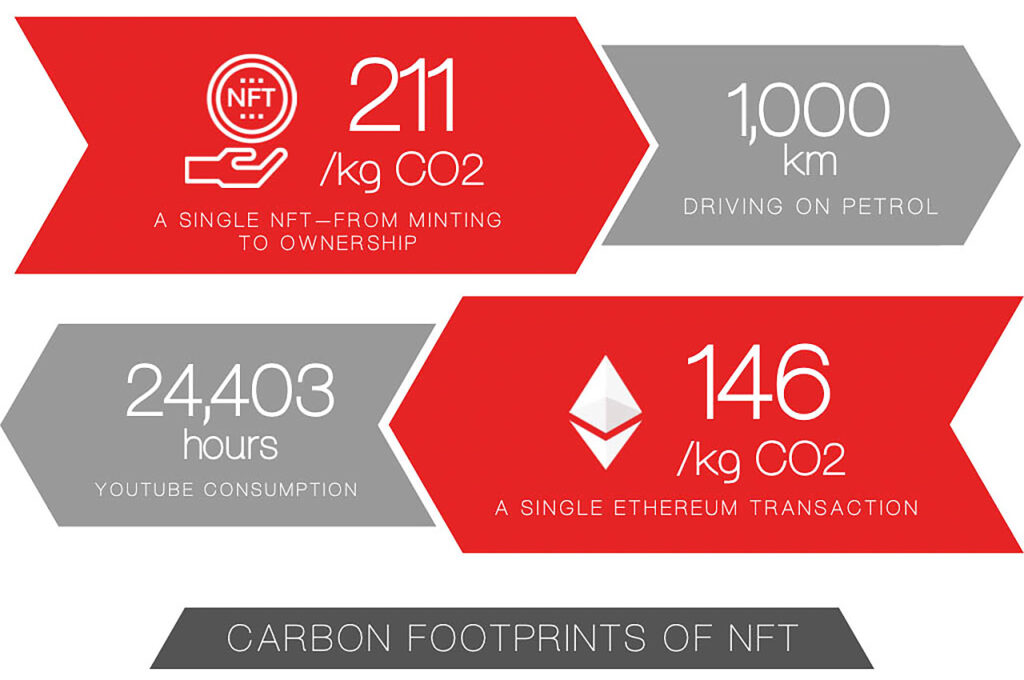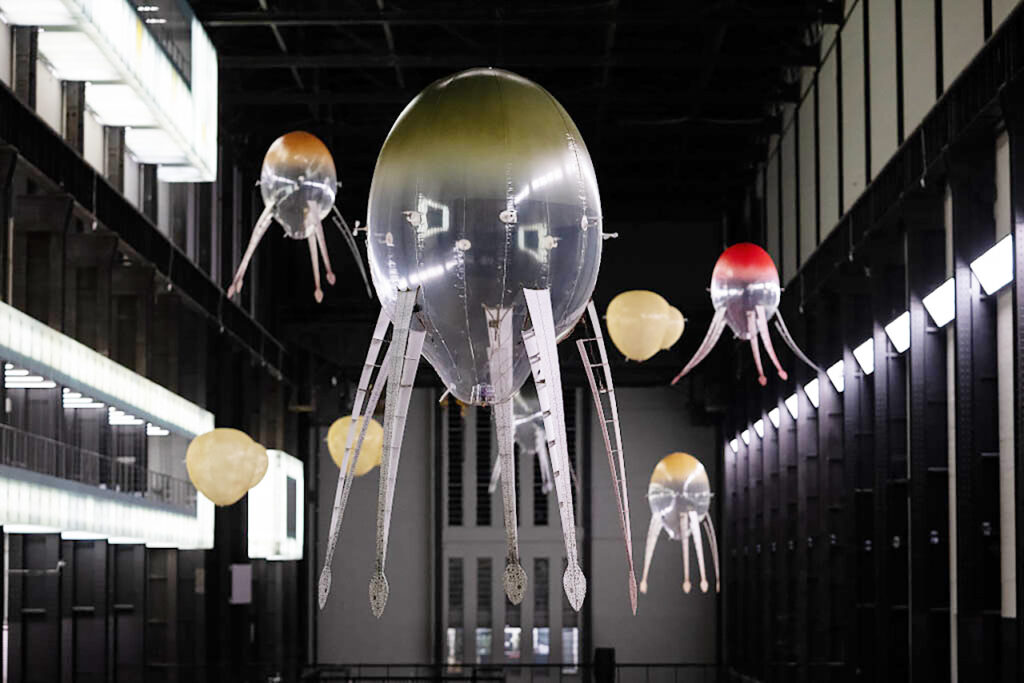This article originally appeared on CoBo Social, our content partner.
In the art world, the question is no longer whether we can go green — we can’t, at least not in a way that would just change the world’s climate issue with the snap of a finger. Rather, the question is perhaps which is the lesser evil: the carbon footprint of mounting exhibitions and art fairs or producing and trading NFT art? And is the art world’s embrace of NFTs offsetting all the goodwill changes the industry was making to reducing its carbon footprint?
The numbers that add up
Over the past 12 months, as the art industry debated the position of NFTs in the discourse of art, what remained under-discussed, was the immense carbon footprint NFTs create, which will no doubt have sway in the long-term adoption of cryptocurrency in mainstream art markets. Although rarely spoken about in the echelons of art, in the crypto space, environmental sustainability is a heavily broached topic — and one that is, as The Verge highlighted, hotly contested.

The carbon footprint of a single NFT has been calculated to average 211kg in CO2, the equivalent of driving 1,000km on petrol.
Admittedly, it is extremely challenging to grasp a precise estimate of NFTs’ carbon footprint, not only because it will vary widely, but also there is still little scientific peer-reviewed studies done on it. What information is readily available so far may only suggest a ballpark figure of the real levels of carbon emissions, but it is enough already to raise concerns.
One of the better known studies on this topic is by artist and programmer Memo Atken, who analyzed 18,000 NFTs on CryptoArt and revealed that when it came to a single NFT — from minting to transactions, ownership and more — its carbon footprint averaged a whopping 211kg (approximately 0.23 tons) CO2. Putting this into perspective, Atken notes that this is roughly equivalent to the carbon emissions of driving 1000km on petrol or flying an airplane for two hours; and an EU resident’s electricity consumption for one month or boiling a kettle 4,500 times.
But the art world did it first

According to Artists Commit’s calculations, Anicka Yi’s “In Love With The World” at Tate Modern generated energy usage of 1.13 tons of CO2 equivalent. Image: Will Burrard Lucas / courtesy of the artist and Tate Modern
It is important to be reminded, however, that NFTs are not the only culprit of environmental damage in the art world. The transportation and shipping of artworks, and the frequency of international air travel are two of the primary contributors of carbon emissions in art logistics. Furthermore, temporary infrastructures and packaging materials produce vast amounts of detritus. Art fairs are a major contributor, well-acknowledged by organizers and those in the game.
For comparison, the Gallery Climate Coalition (GCC) calculated the energy consumption of Frieze London in 2019 to be 88.1 tonnes CO2, which excludes the footprint of individual gallery participants and visitors. More recently, artist-led collective Artists Commit utilized GCC’s carbon emissions calculator and produced a report of Tate Modern’s Anicka Yi installation, which was on view from October 2021 through January 2022. While not entirely comprehensive, the figures present a brutal truth of just how even a single artwork exhibition can have a large carbon footprint with hefty hidden costs.
An unequal comparison but a comparison nonetheless
As the above numbers indicate, it’s nearly impossible to chart a truly accurate comparison side-by-side. The contributing factors vary far and wide. However, two things are for certain: firstly, the art world’s existing practices were already damaging to the environment, while cryptocurrency and its processes were also leaving behind an undeniable trail of carbon emissions; secondly, both the art world and the crypto sphere have been taking active measures to address these issues, mainly in the form of offsetting carbon emissions and exploring environmentally-friendly alternatives (though the barrier here is often that these are not the predominantly used options).
While we don’t appear to yet have the quantifiable numbers to suggest one is better or worse than the other, the question we can ask ourselves as as crypto technology expands its presence in the future of art is this: Did we simply swap one for the other? Did embracing NFTs into mainstream art markets simply undo the good changes the art world was making towards net-zero carbon emissions?
Before we get too carried away with how much the next crash hot NFT dropped for, and lose sleep over whether NFTs will be an art movement in its own right, we may instead be better off thinking about the environmental consequences of this shift.
Find more insightful perspectives on the contemporary art world in Asia and beyond at Cobo Social.



